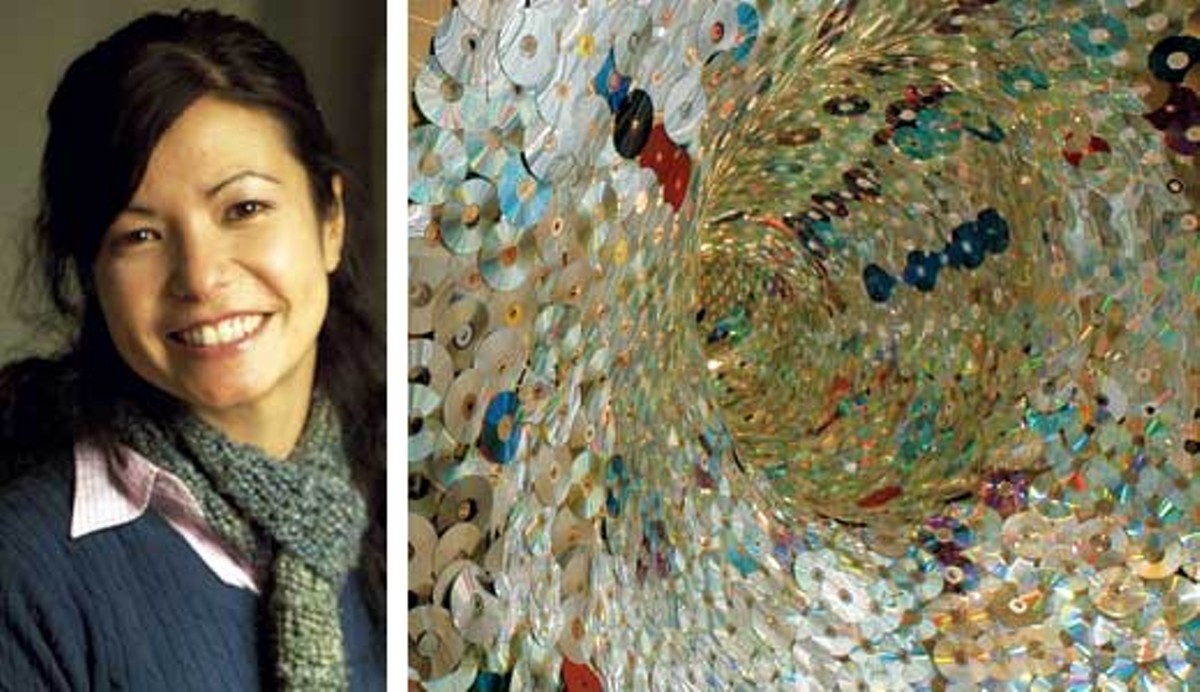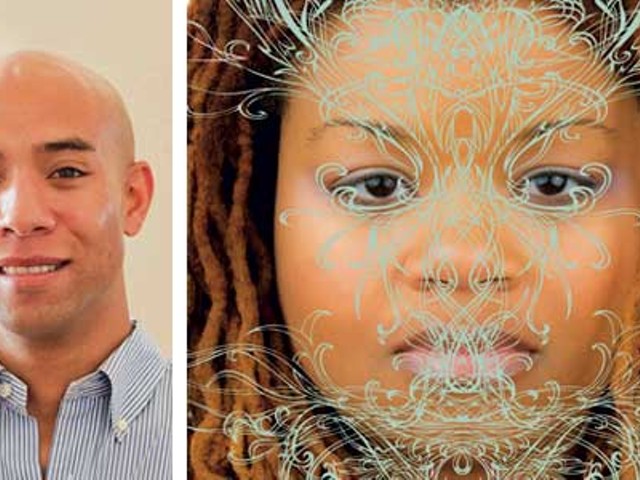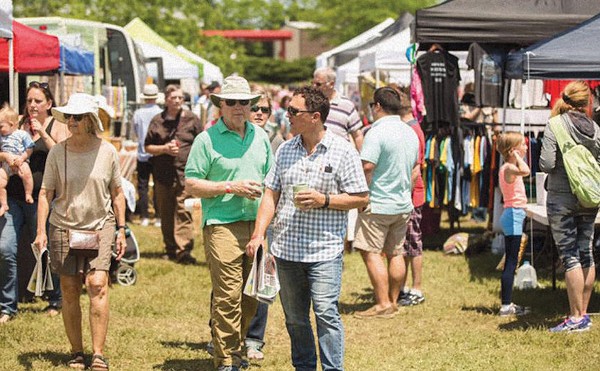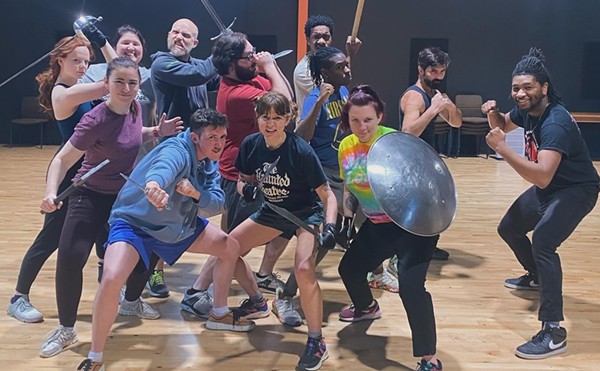Plastic bottles, hula-hoops, discarded CDs. For most, these are not objects of beauty. They don’t trigger profound thought. They don’t create wonder about the world we live in, the way we live in our world, or human nature. But sculptor Leticia Bajuyo is fascinated with such mundane materials, which she incorporates into works of art.
Most recently, you might have spotted Bajuyo’s work at the Forecastle Festival, where she displayed a giant, interactive sculpture constructed entirely of plastic water bottles.
“In the case of Forecastle, the concept I wanted to communicate was the importance of the environment and recycling,” Bajuyo says. “And then, for me, it was about play.”
The Illinois-born sculptor considers fun and intrigue critical to her profession.
“I wanted to relay this message, but I wanted people to be able to interact with it and be able to touch it and walk under it and just kind of stumble upon it,” she says. “You couldn’t help but smile when you saw it. And it brought up a different way to look at plastic, which ends up, unfortunately, at the side of the interstate or in the trashcan most of the time. It was about utilizing these things that are created properly and the best way to use them when we’re ‘finished’ with them.”
Last year, she began creating sculptures out of compact discs, building vortexes and walls that encompassed thousands of CDs, her new favorite material.
The exhibit was displayed at both the Herron School of Art in Indianapolis and the Cressman Center at the University of Louisville. One side of the discs had text — ranging from handwritten titles like “Break-up Mix ’98” to intricate graphics on industry-issued releases — while the other was a wall of mirrors.
In erecting the exhibit, the artist solicited the help of volunteers, which she did at Forecastle as well.
“I like giving the audience an opportunity to help with the artwork, whether it’s by actually donating the materials or by helping to put the actual piece together,” Bajuyo says. “Oftentimes from there, they’ll ask why do I do it, and they become kind of an asset to that design as well and become a part of the art. When you’re sitting together stringing together thousands of CDs or plastic bottles, questions come up.”
In addition to utilizing compact discs and plastic bottles, Bajuyo has created vast “tornadoes” from hot pink hula-hoops, and used homemade soap and cross-stitching in exhibits.
When asked why she uses such unorthodox materials in her work, Bajuyo credits a love of problem solving.
“I like the whole, ‘Here’s the space you can have, here’s the theme, what can you do?’ And the space and the purpose interact and determine what materials I’ll use and what’s applicable at the time,” she says. “I like having those parameters because it makes me stretch that much further. What is it that I can borrow to do this? What can I combine that already exists to make something else and make people notice them in a different way?”
After years of traveling and showcasing her work nationally, Bajuyo accepted a professor position at Hanover University in Indiana a few years ago, meaning her work can now be found in this region more frequently.
“I began making a cognizant intention to come down to the gallery hop more often and coming to Louisville for the art community, and doing the same in Indianapolis,” she says. “I actually like this better. I’m able to get to know people in the area, and become familiar with studios and other artists in the community. Too often as artists we feel isolated and like there’s no one else, and being here and making these relationships gives me more of an optimistic attitude about being an artist in the Midwest. You know, people think you have to go to New York or L.A. to make it, and they overlook all of the other opportunities everywhere else.”






